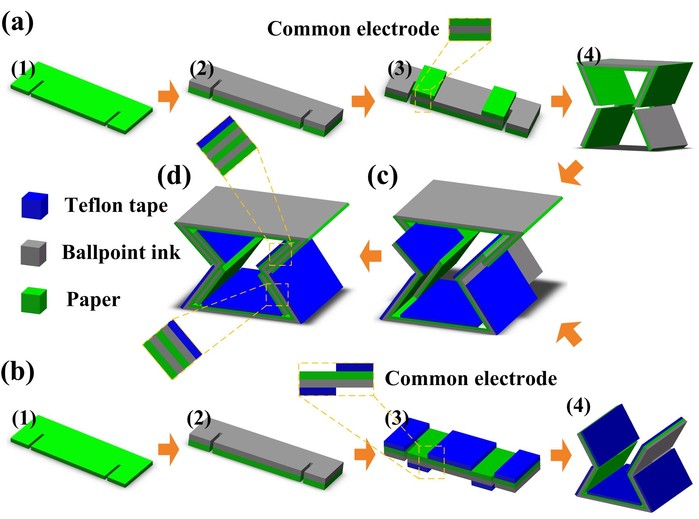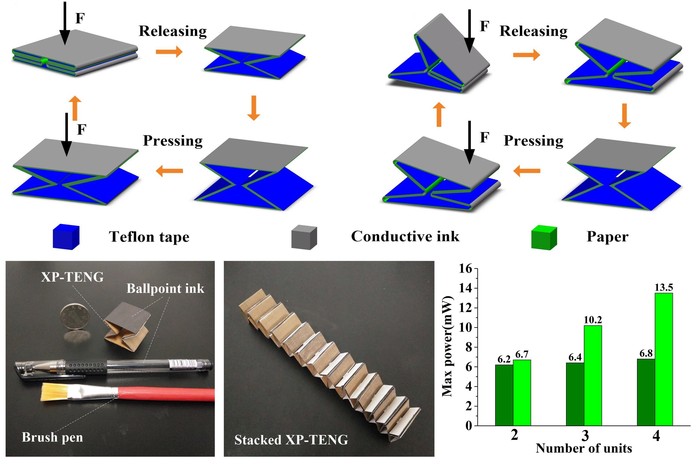Human body motion propels a high-output triboelectric nanogenerator on paper
Portable electronic devices, say the smartphone and the laptop, have become a necessity in daily life. The expeditious development of these devices benefits enormously from renewable and environmentally-friendly batteries. As such compact and handy wearables as sports bracelets are becoming all the rage, it is top on the list of priorities that efficient, clean and sustainable electrical energy should be made available.
Recently, a research team led by Dr. ZHU Zhiyuan from ZJU’s Ocean College has developed a novel X-shaped paper-based triboelectric nanogenerator (XP-TENG) characterized by minimalist structure, small volume, low costs and super abilities to harvest energy from human kinetic energy.

The findings are published in the journal of Nano Energy. The lead author is XIA Kequan, a master’s candidate in naval architecture and marine engineering, and the corresponding author is Dr. ZHU Zhiyuan. Co-authors also include two undergraduate students—DU Chaolin and WANG Rongji.

TENGs represent an affordable, green, and eco-friendly energy harvesting method. Dr. ZHU Zhiyuan et al. propose an ingenious XP-TENG deriving from a ballpoint ink layer coated by painting with a commercial brush pen. The paper and Teflon tape serve as the triboelectric pairs, with the paper serving as the supporting component. Moreover, the XP-TENG is capable of providing two working patterns that can yield an expanded scope of practical applications. A stacked XP-TENG aims at increasing the output performance and harvesting the mechanical energy generated by motion of the human body. This staked XP-TENG can directly light up 101 blue high-power LEDs with working voltage of 3.4 V. The fabricated XP-TENG can be used for harvesting mechanical energy from human walking.
The XP-TENG can adapt to a humid environment and has the potential for working in the marine ambience. “In the future, the submarine search light may be able to acquire energy from human mechanic energy,” ZHU Zhiyuan says.